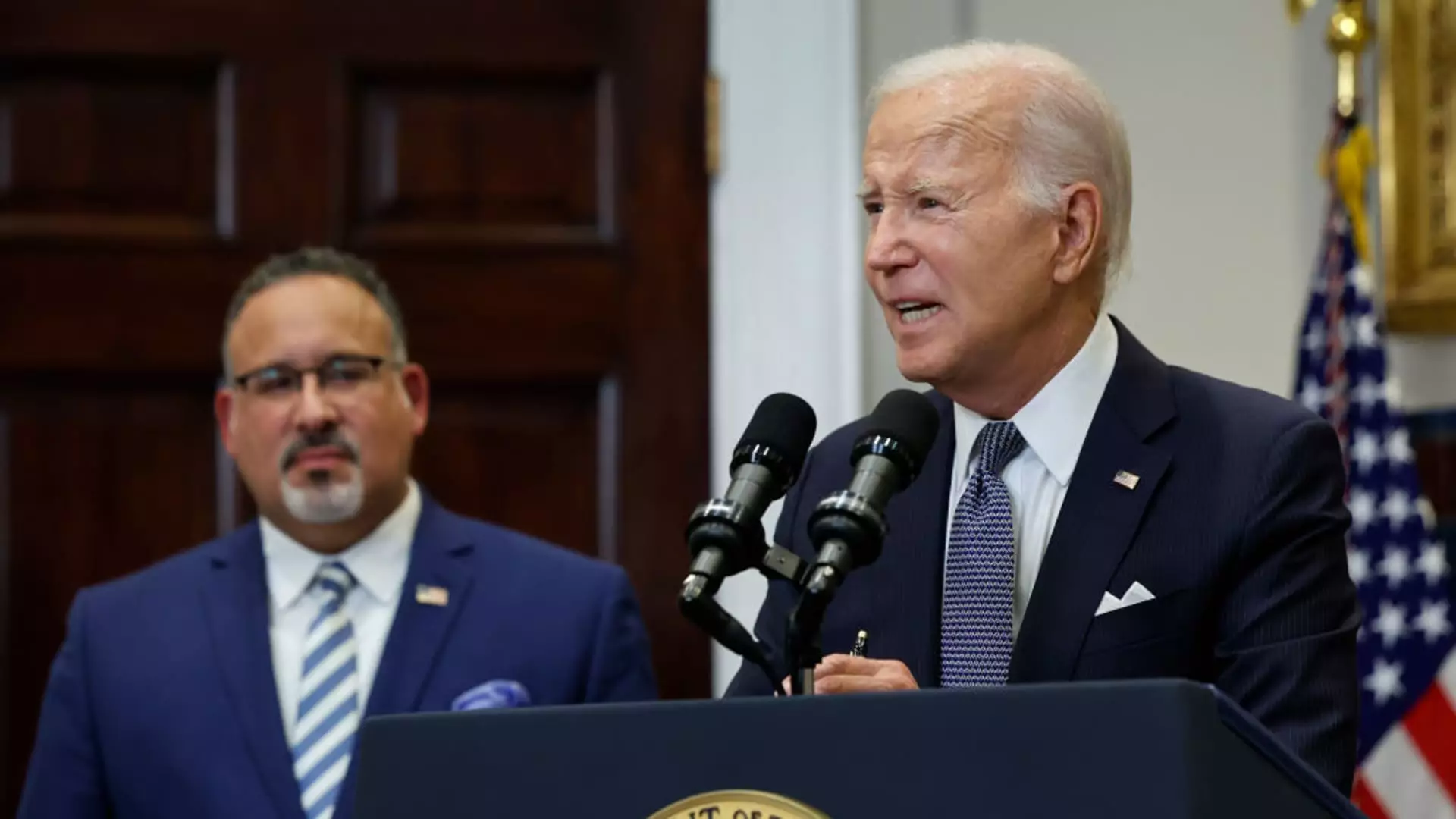As we enter a pivotal phase in the landscape of federal student loans, borrowers who have previously defaulted are now facing the resurgence of collection activities—a stark reality that had been paused for nearly five years. The confluence of renewed collection efforts, including wage garnishment and the offset of social security benefits, echoes concerns reminiscent of the financial crisis surrounding mortgage defaults a decade and a half ago. In an informative report released by the U.S. Department of Education, the implications of these impending changes are significant for millions who carry student loan debt.
The data reveals a distressing truth: approximately 7.5 million borrowers found themselves in default by 2022, leading experts to draw parallels to the 2008 mortgage crisis. Although the situation showed signs of improvement—with the number of defaults decreasing to around 5.5 million by late 2024—this decline does not negate the urgent need for effective strategies aimed at preventing further defaults. The Education Department’s recent memo highlights plans to resume corrective measures as soon as this fall, as the administration grapples with the challenges of reintroducing harsh penalties after an extended period of leniency.
The pandemic-induced pause on federal student loan payments created a temporary buffer for borrowers dreading the possibility of default. This moratorium allowed many individuals to stabilize their financial situations, but with its expiration in September 2023, they now face daunting challenges. To alleviate the pressures returning to repayment entails, the Biden administration had previously put forth a 12-month “on-ramp,” intended to shield borrowers from severe consequences. However, as this relief period came to a close, impending wage garnishments starting in October 2024 signify a harsh return to form for delinquent borrowers.
In light of the renewed collection efforts, the Department of Education has outlined a series of strategies intended to facilitate a smoother transition for borrowers back into repayment. The memo suggests automating enrollment into income-driven repayment plans (IDR), which should provide borrowers with manageable payment structures based on their discretionary income. The ability for the department to access income information from the IRS for these plans marks a significant step toward ensuring that borrowers have access to feasible repayment options.
One noteworthy initiative discussed in the memo is the encouragement of proactive measures to identify borrowers eligible for forgiveness before they formally default. By leveraging data from federal agencies, this innovative approach could mitigate defaults by alerting borrowers about potential relief options. Higher education financing expert Mark Kantrowitz emphasizes the importance of such early intervention, advocating for broad implementation beyond the confines of impending default.
Incentives for Payment Automation
Financial incentives to promote payment automation have also emerged as a central part of the proposed reforms. Currently, borrowers benefit from a minor reduction in interest rates—around 0.25 percentage points—by enrolling in automatic payments with their loan servicer. The memo hints at the potential for these incentives to be expanded, demonstrating a concerted effort to foster consistent repayment behaviors among borrowers.
Despite these committed strategies, the transition period is rife with uncertainty. The intention behind these initiatives could be overshadowed by looming policy alterations under a new administration. As such, the future of these measures remains precarious, and their successful deployment will be contingent upon the willingness of successive leadership to uphold and build upon these efforts.
Additionally, the memo outlines protective measures for vulnerable populations reliant on Social Security benefits. With changes proposed for early 2024 that would raise the safeguarded amount of these benefits from $750 to $1,883, the Education Department aims to create a more compassionate approach to collections for those impacted by default. This shift in policy could potentially protect a substantial portion of borrowers from having their benefits unduly penalized, thus providing a vital safety net during challenging financial times.
With resuming collection activities, prioritizing timely intervention for at-risk borrowers has never been more crucial. As the Biden administration seeks to implement comprehensive strategies to combat student loan defaults, a focus on ensuring borrowers are educated about their options and effectively supported through transitional timelines is essential. The next chapter in the narrative surrounding federal student loans will depend significantly on the collaborative efforts of policymakers, educational institutions, and borrowers themselves to navigate this complex landscape prudently. An innovative and supportive framework could provide a pathway for millions to regain control over their financial futures.


Leave a Reply